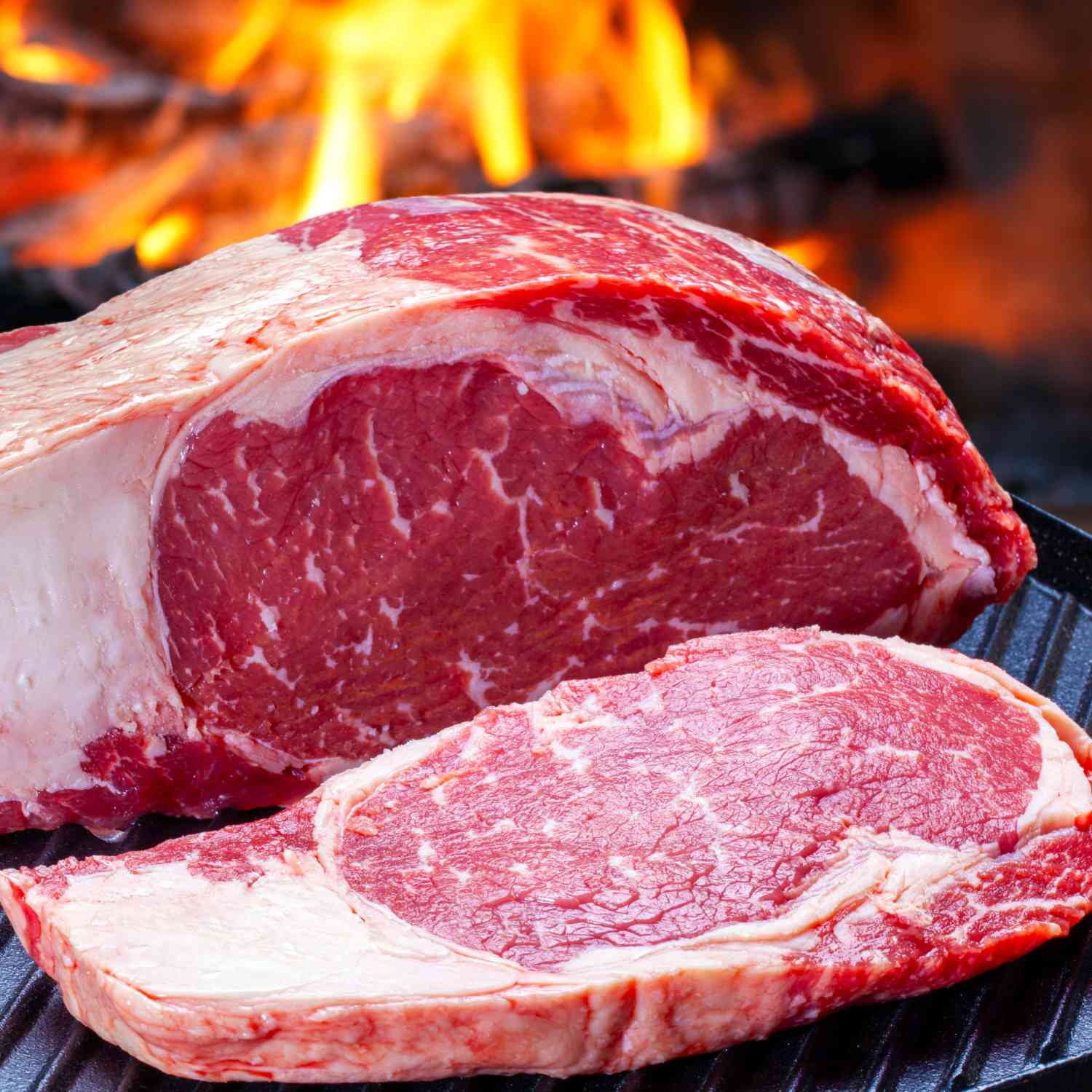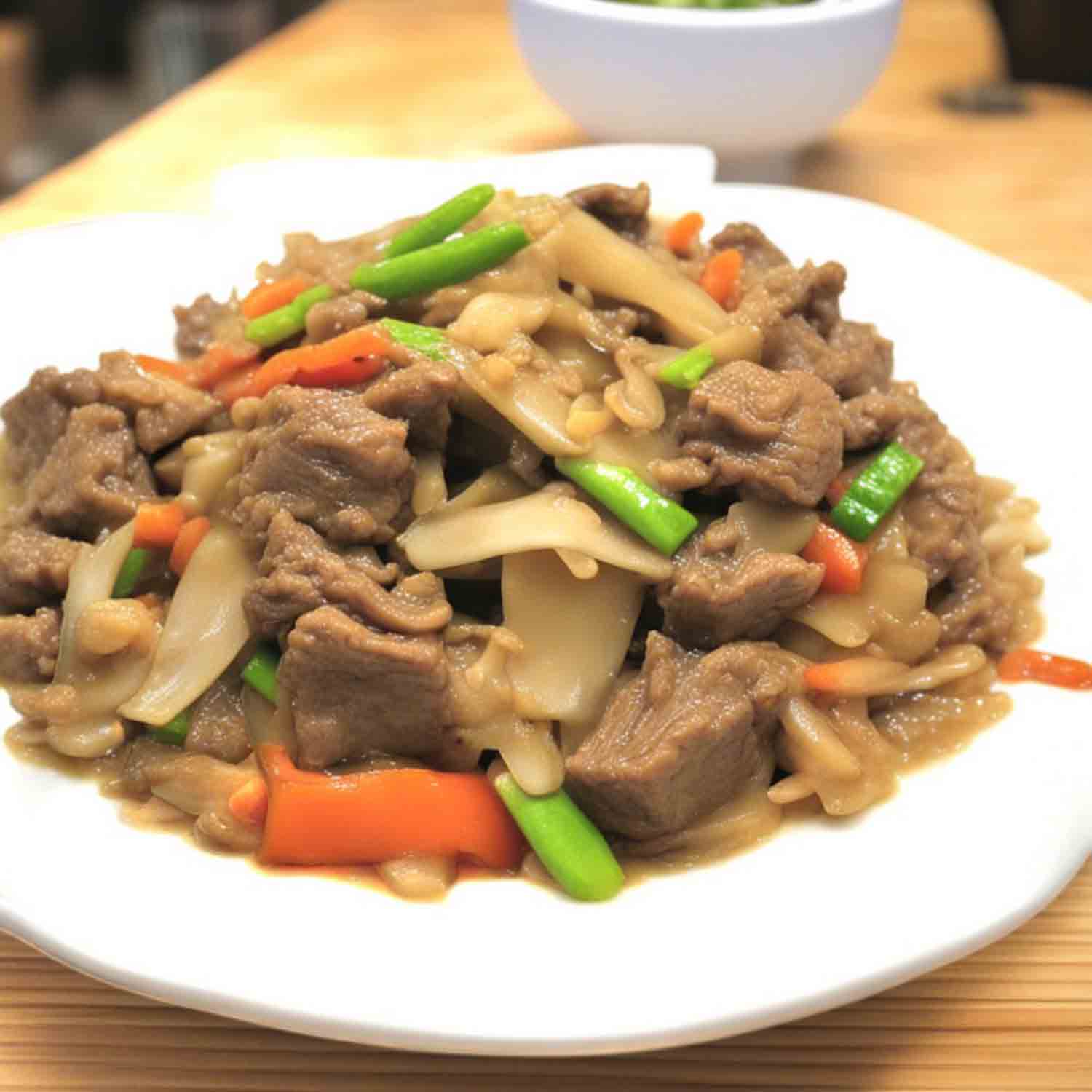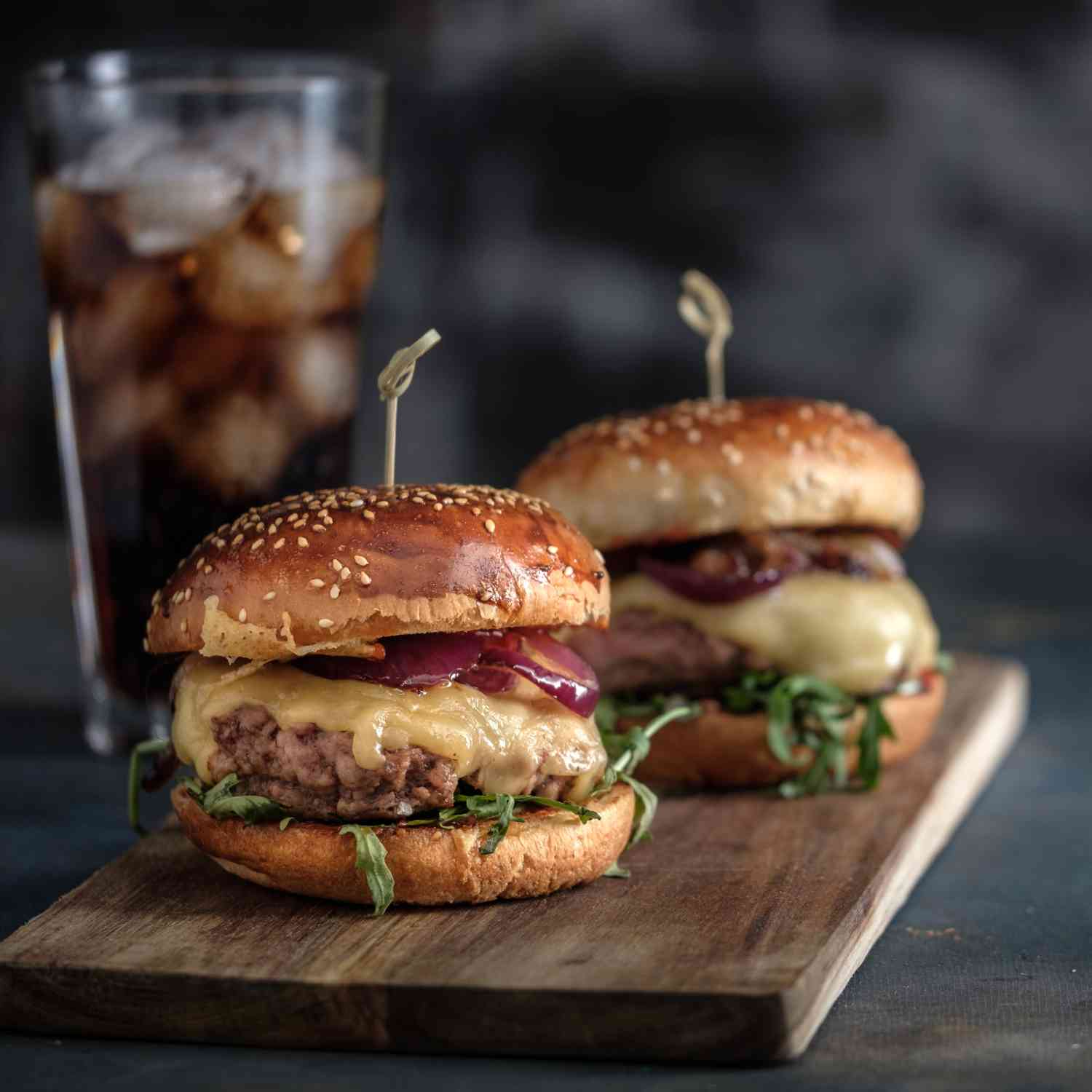The King of Steaks: Ribeye Meat King Guide
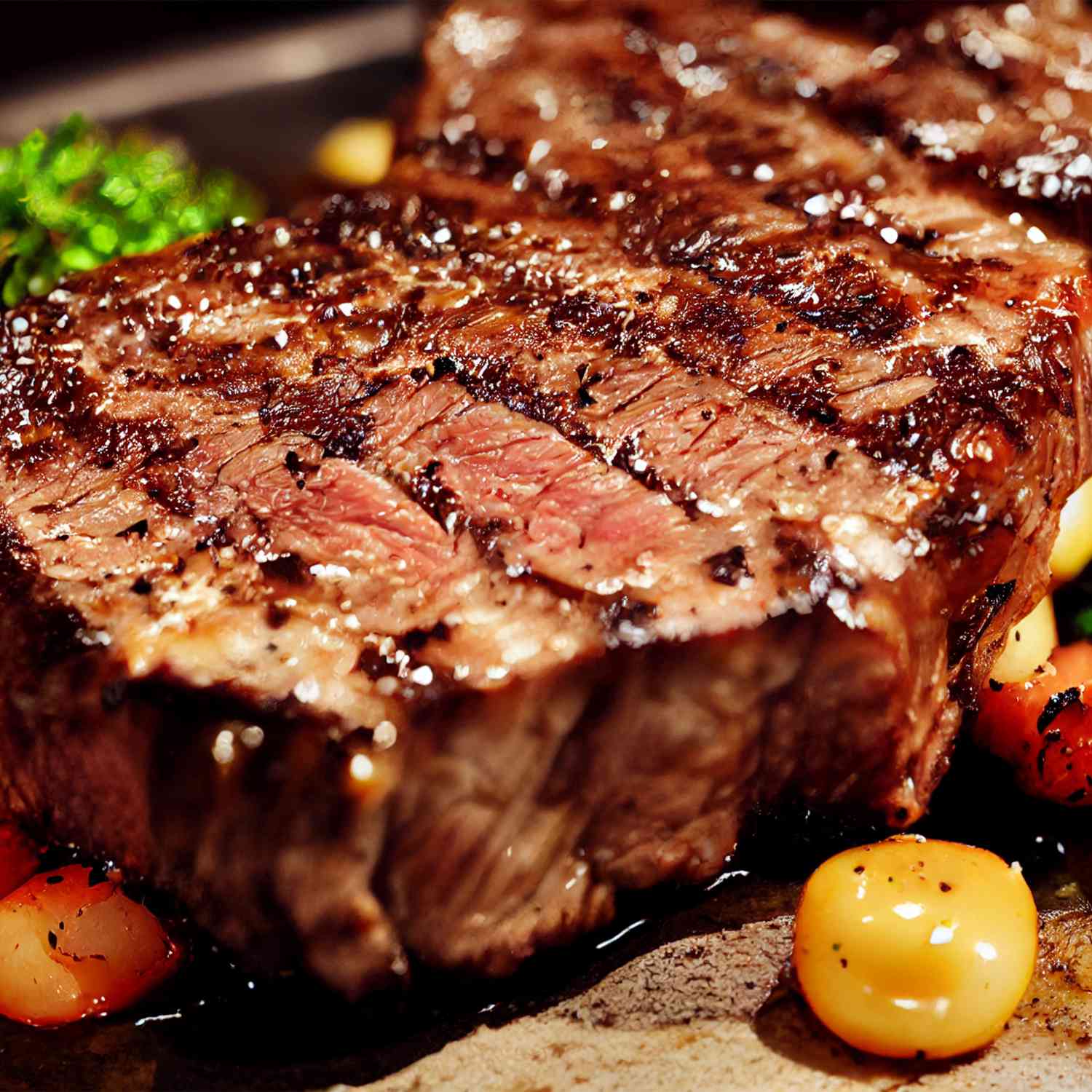
Ribeye steak is undoubtedly one of the most popular and delicious cuts of beef in the world. It has a distinctive rich and beefy flavor that is sure to satisfy even the most discerning of palates. The tender and juicy texture of ribeye is what makes it stand out from other cuts of meat. It's no surprise that ribeye steak is often referred to as the king of steaks, as it is truly a luxurious and premium cut that is sure to impress guests at any dinner party.
While ribeye steak may seem like a daunting cut of meat to prepare, it's actually quite simple. In this comprehensive guide from Meat King, we'll take you through everything you need to know about ribeye steak. From its fascinating history and unique characteristics to how to select the perfect cut, prepare it, cook it to perfection, and serve it in a way that will impress even the most discerning of diners.
So if you're a seasoned grill master looking to add a new cut of meat to your repertoire, or a beginner who wants to explore the world of steak, ribeye is definitely a cut you'll want to try. Follow our expert tips and tricks and you'll be able to create a delicious and impressive meal that will leave your guests begging for more.
What is Ribeye Steak?
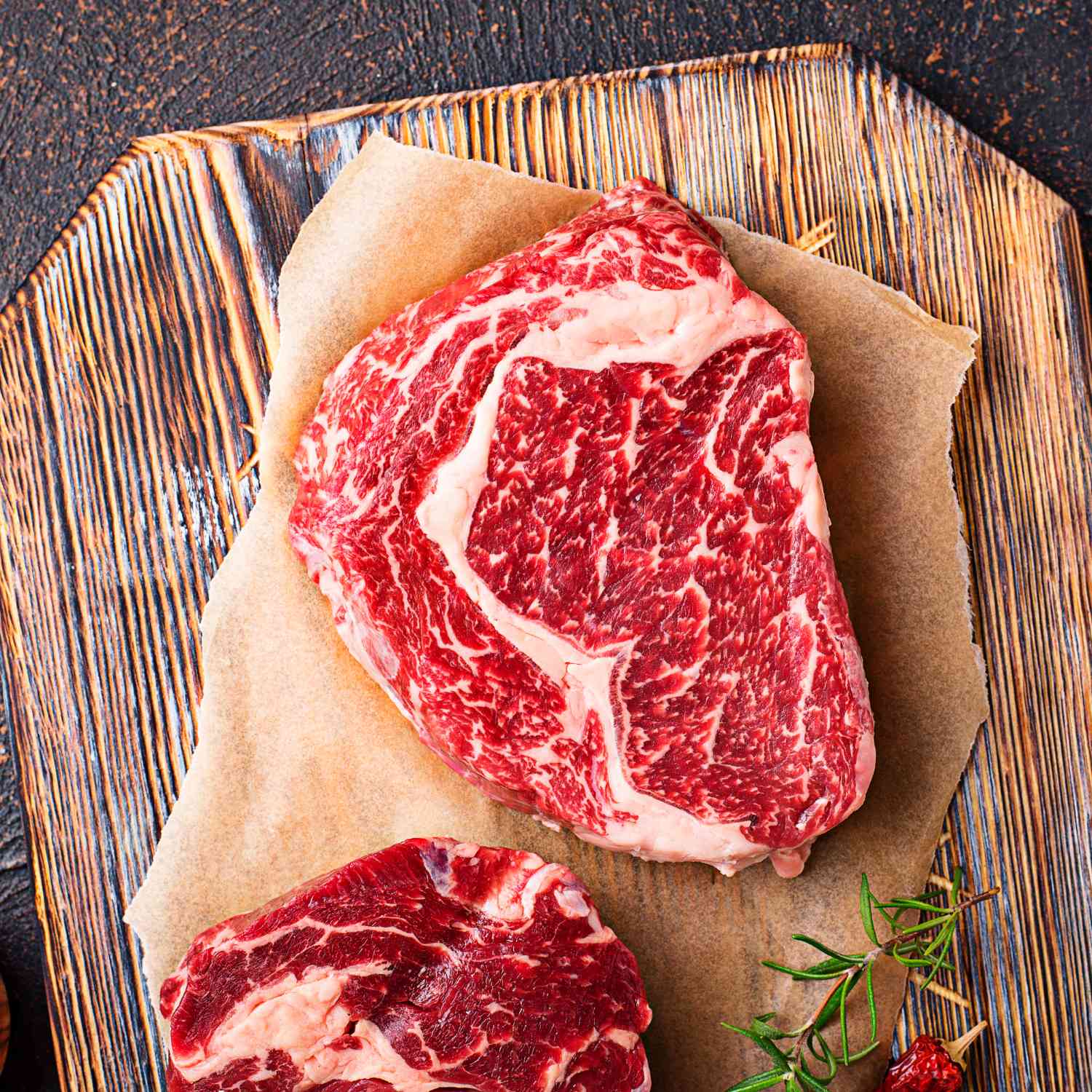
Ribeye steak, sometimes marketed as beauty steak, Delmonico steak, Scotch fillet, or entrecôte, is a luxurious cut of beef taken from the rib section of the cow, specifically ribs 6 through 12. It contains portions of the longissimus dorsi muscle as well as the complexus and spinalis dorsi muscles. Ribeye is treasured for its extensive marbling, which refers to the white flecks of fat interspersed throughout the meat.
This generous marbling is what gives ribeye its claim to fame - when the fat melts during cooking, it bastes the meat in its own natural juices, keeping it incredibly moist, tender, and full of rich, beefy flavor. The rib section does minimal work, so the ribeye muscle stays relaxed and tender. Ribeye's high-fat content and lack of exercise make it one of the most tender, succulent cuts of steak you can buy.
Ribeye steaks are sometimes sold bone-in, which offers a dramatic presentation, or boneless for convenience. They can range in thickness anywhere from 3⁄4 inch to 2 inches or more. Ribeyes are extremely versatile - they can be grilled, pan-seared, broiled, or roasted to juicy, medium-rare perfection. If you want a steak that is meltingly tender with a big beefy flavor, ribeye is a prime choice.
History of Ribeye Steak
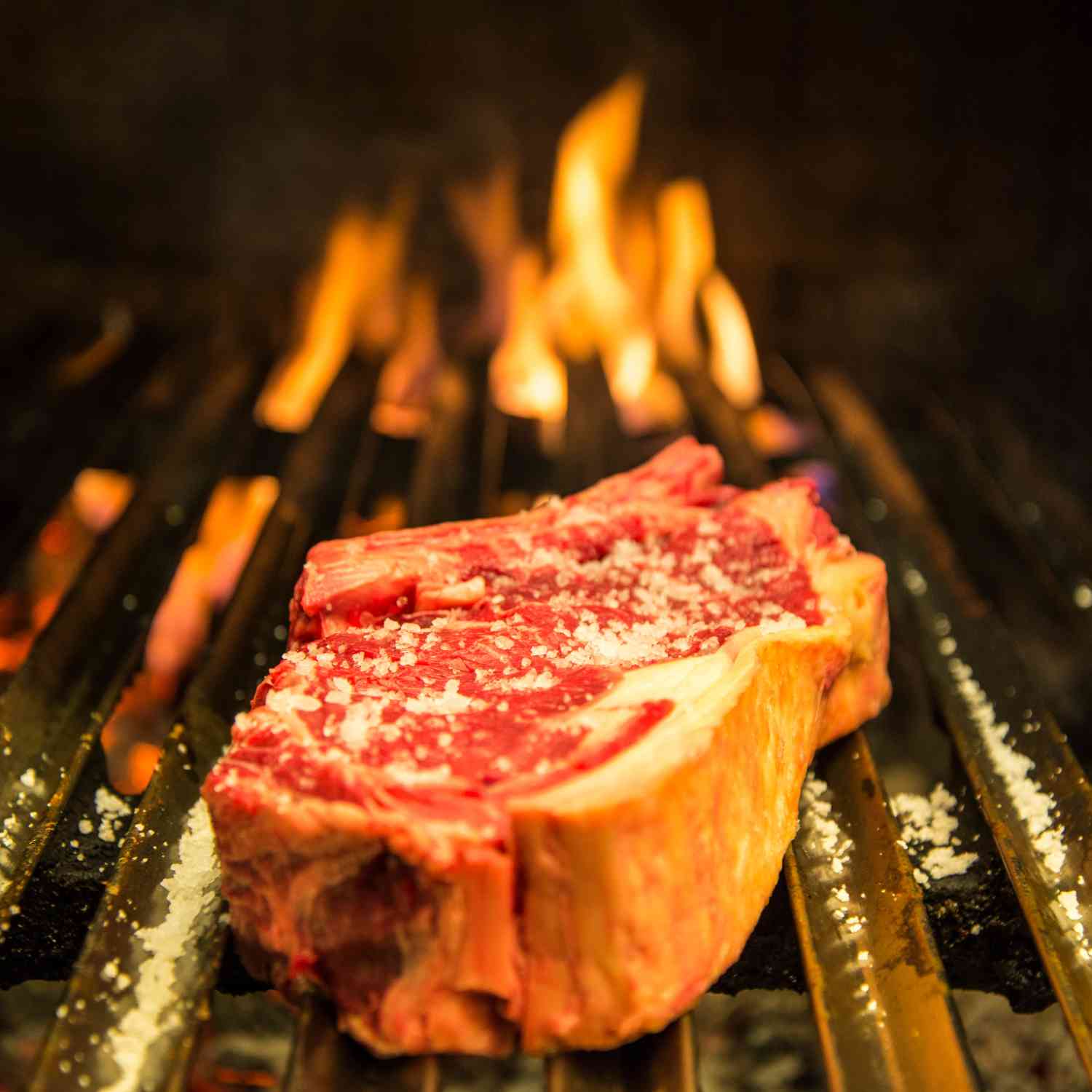
The rib section has historically been the most prized part of a beef carcass, favored for its tenderness and flavor since ancient times. Evidence shows ribs were commonly eaten during the Stone Age over two million years ago. Roast rib recipes appear in ancient Roman texts as well.
In the American West, cowboys cooked ribeye steaks over open fires while driving cattle across the frontier. The rib was referred to as the "bread basket" since it came from the ribcage area. As cities like Dallas, Chicago, and Kansas City became beef capitals, the ribeye steak rose in popularity on menus nationwide thanks to its rich flavor and tender texture.
The term "ribeye" emerged in the late 1800s to specify the exact portion of the rib used for steaks, differentiating it from other rib cuts like short ribs. Refrigerated railcars allowed ribeyes to be shipped eastward, gaining favor in top restaurants and households in New York, Philadelphia, and beyond. By the 1950s, the abundantly marbled ribeye cemented its status as the elite of premium steaks. Today it remains a beloved menu item from white tablecloth steakhouses to backyard grilling.
Where Ribeye Steak Comes From on the Cow
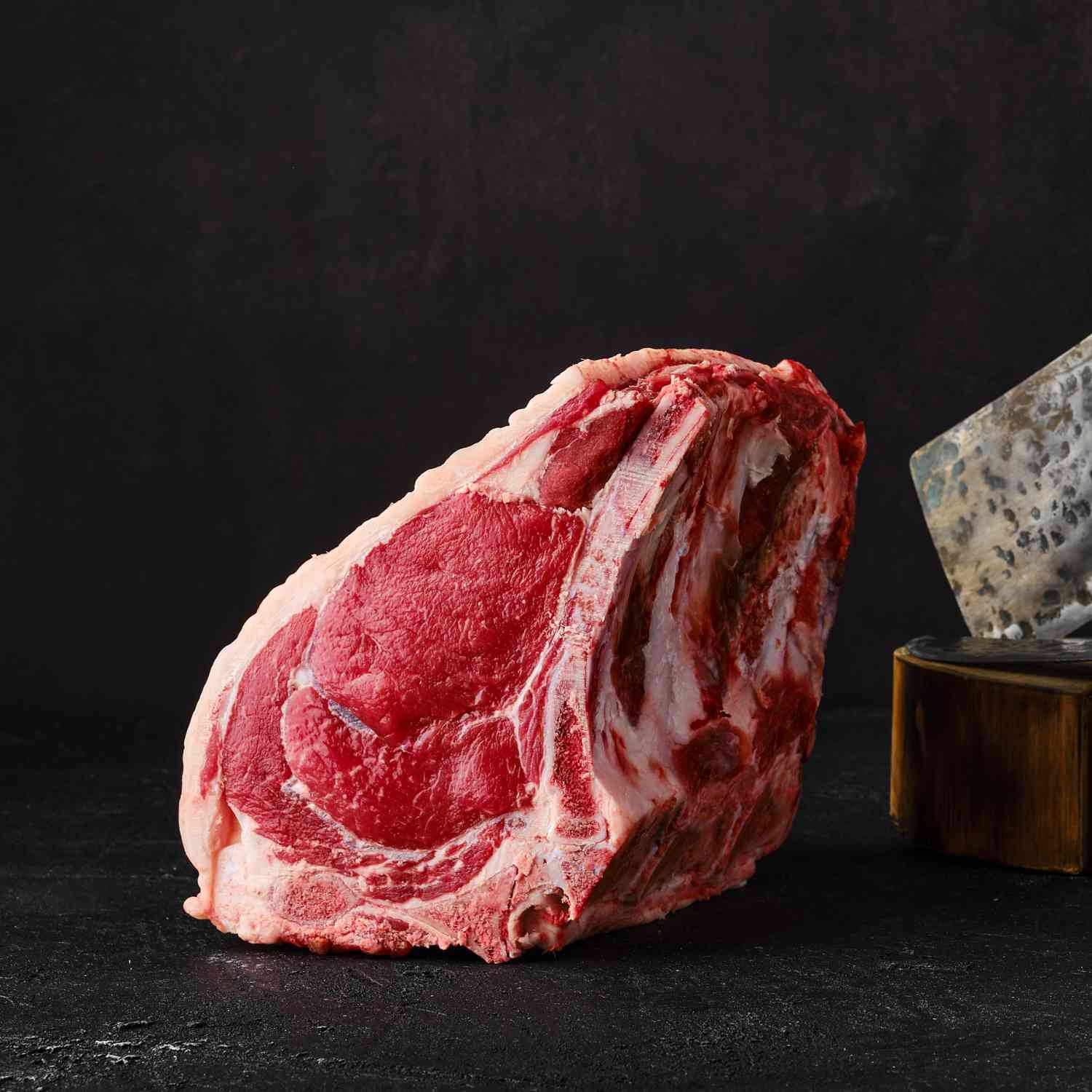
As noted earlier, ribeye steak comes from the rib section of the cow, specifically ribs 6 through 12. This places it in the forequarters or front half of the animal. When the cow is processed, the rib primal cut is removed between the chuck roll and the short loin.
The rib primal contains the six individual rib bones along with four key muscles:
- Spinalis dorsi - The outer "cap" muscle that runs along the back of the rib section and contains the most marbling. This is the tastiest part of the ribeye.
- Complexus - The muscle located under the spinalis dorsi cap and also well-marbled.
- Longissimus dorsi - The largest, main eye muscle that runs down the back half of the steer. Less marbled than spinalis/complexus but still tender.
- Multifidus dorsi - A smaller muscle toward the interior side of the ribs.
The longissimus dorsi is sometimes removed whole for cutting boneless ribeye steaks. Bone-in ribeyes retain the iconic spinalis cap and complexus "lip" surrounding the bone.
Understanding the ribeye's anatomical origin helps explain why it consistently delivers such exceptional flavor and tenderness.
Unique Characteristics of Ribeye Steak
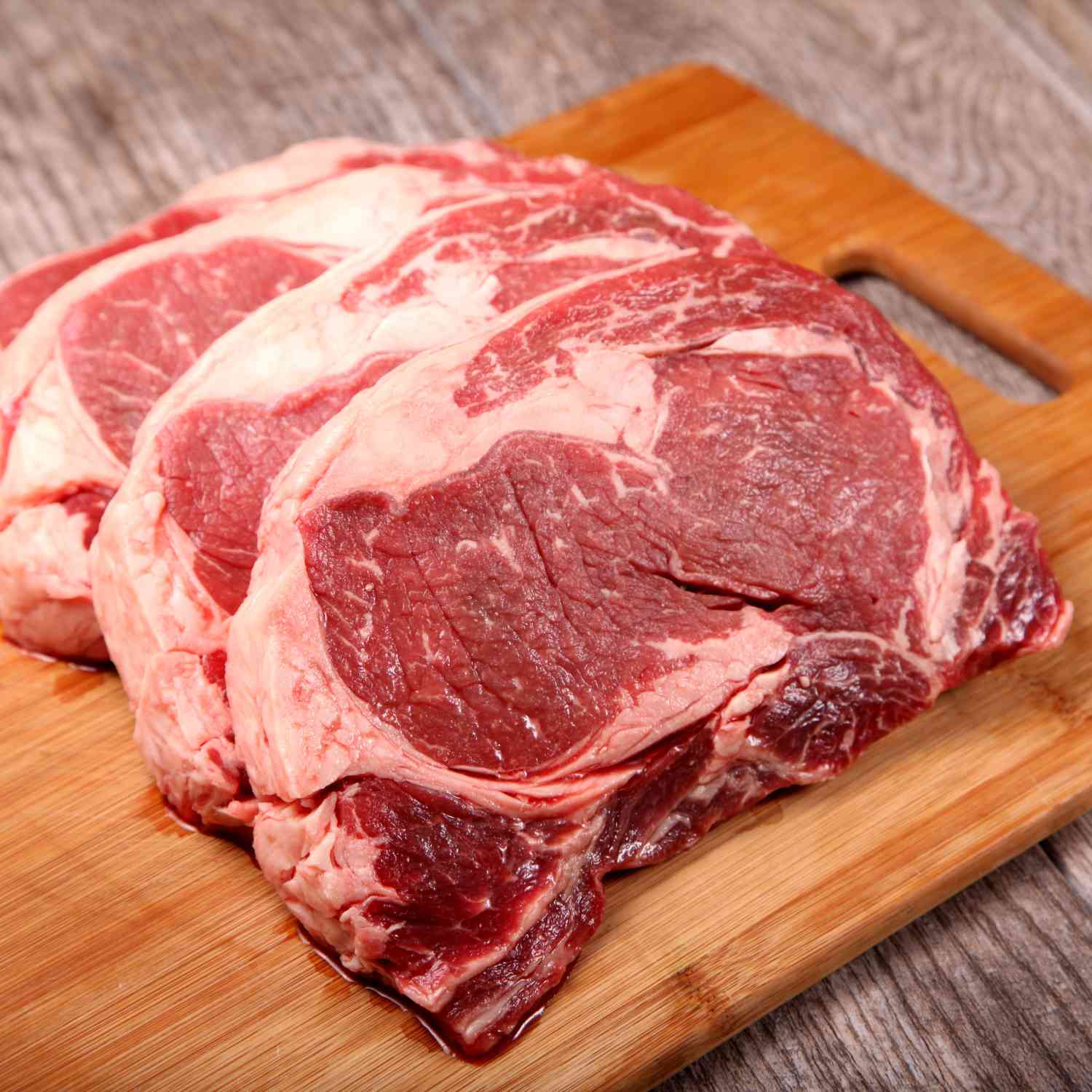
There are a few important characteristics that set ribeye steaks apart from other cuts:
Marbling - The plentiful marbling running through a ribeye steak is its defining feature. The fat bastes the meat during cooking.
Flavor - With its high-fat content, ribeye bursts with a rich, beefy flavor. The rendered fat carries the flavor throughout.
Tenderness - Because the rib section is minimally worked, ribeye meat contains little connective tissue. This makes ribeyes incredibly tender.
Versatility - Ribeyes can be cooked from rare to medium-rare to medium thanks to their tenderness and fat.
Presentation - A bone-in or Tomahawk ribeye makes a dramatic plate presentation and is visually striking.
Nutrition - While ribeye is high in fat, it contains heart-healthy monounsaturated fat along with protein, iron, zinc, and B vitamins.
Simply put, ribeye is the whole package - it delivers melt-in-your-mouth tenderness, mouthwatering juiciness, and robust beef flavor in every satisfying bite.
How to Choose the Best Ribeye Steak
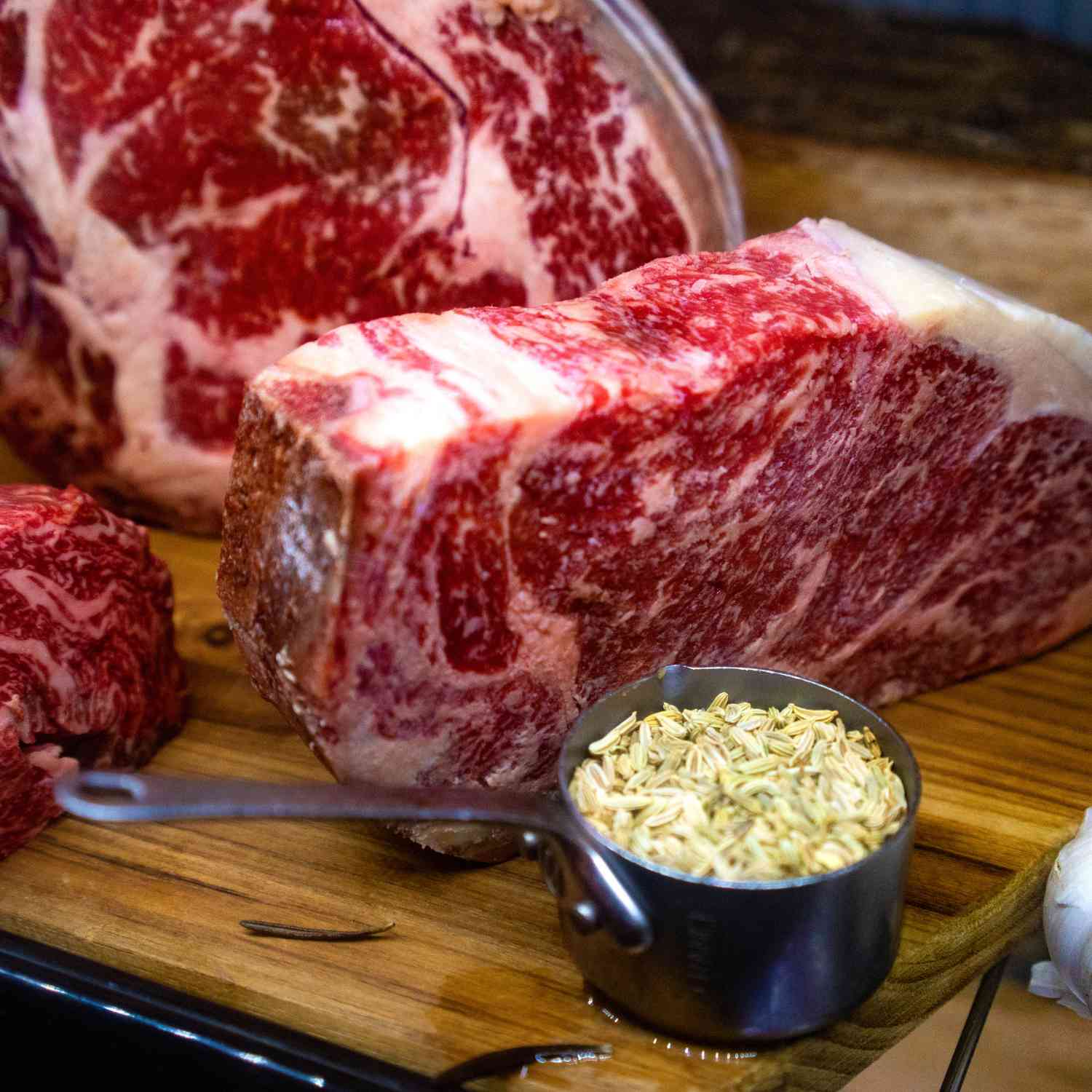
When selecting the perfect ribeye steak at the butcher shop or grocery store, there are a few things to look for:
Marbling – Look for ample thin streaks of white fat evenly dispersed throughout the meat. Avoid ribeyes with large chunks of fat, which won't render properly.
Color – Fresh ribeye should have a bright cherry-red color. Dark, purplish meat is older.
Surface – It should look smooth and velvety, not sticky or slimy. Pass on steaks with dry patches or discoloration.
Size – For individual steaks, aim for 1 to 1 1⁄2 inches thick. For sharing, choose larger steaks.
Weight - Individual steaks from 12 to 16 oz. are ideal. Buy thicker steaks for more portions.
Cut – Bone-in or boneless comes down to preference. For a dramatic presentation, choose Tomahawk.
Fat Cap - Around 1⁄4 inch thick is best. Too thin and it won't baste well. Too thick and it won't render fully.
When examining ribeyes, abundantly marbled meat and bright red color are the top priorities for mouthwatering flavor and juiciness.
How to Prepare Ribeye for Cooking
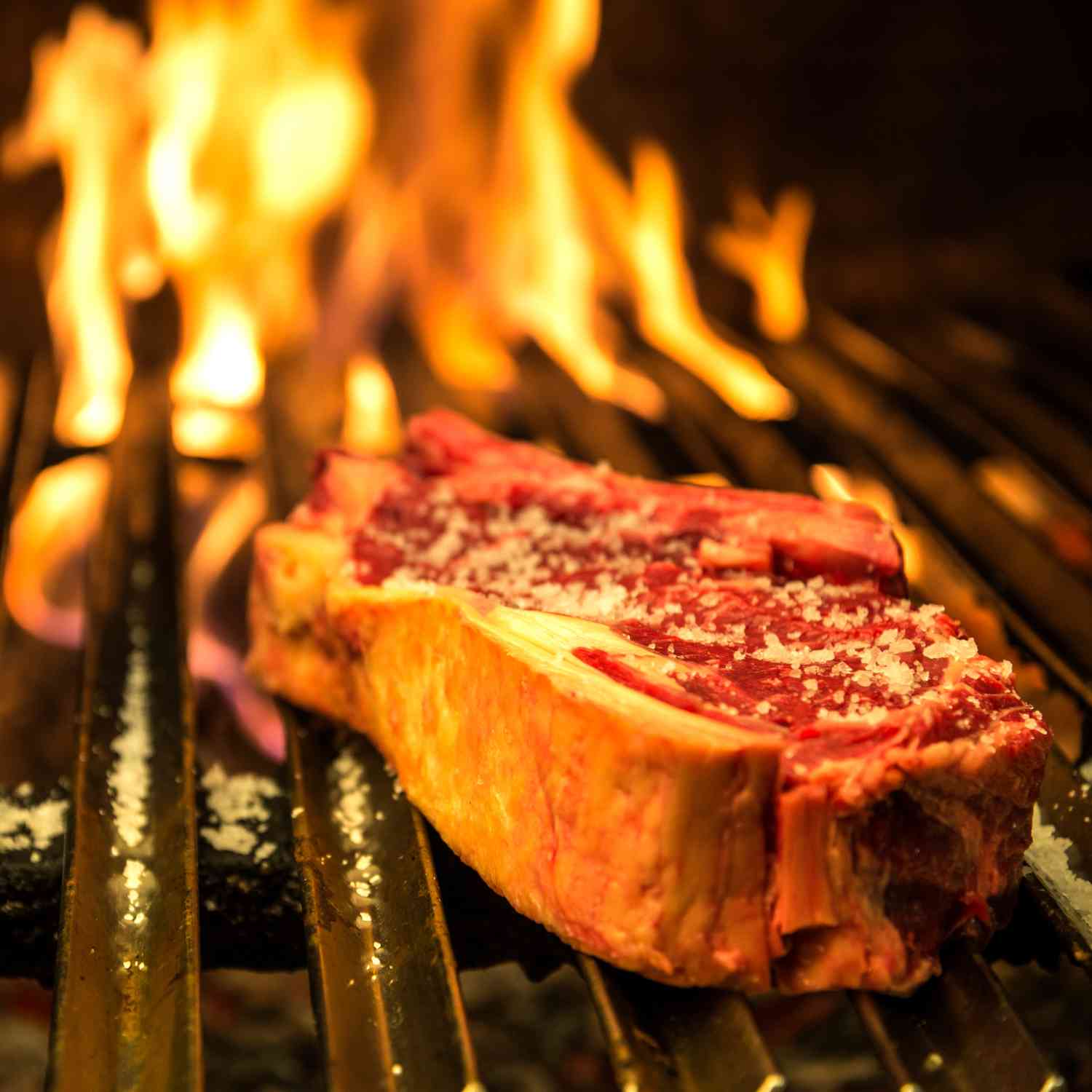
Preparing ribeye steaks properly before cooking is crucial for achieving perfect doneness from edge to edge with a flavorful, crispy crust. Follow these easy steps:
- Remove steaks from the fridge and allow them to come closer to room temp before cooking, at least 30 minutes.
- Generously season both sides with kosher salt and cracked black pepper. Apply more salt than you think you need.
- Optional but recommended - Lightly brush with oil to promote browning. Avocado, grapeseed, olive, or ghee work well.
- Consider scoring the fat cap with a knife in a crisscross pattern to help render the fat.
- Let steaks sit at room temp for 10-15 minutes post-seasoning so flavors penetrate the meat.
- Right before cooking, pat extremely dry with paper towels. This will vastly improve searing.
With the right prep, your ribeyes will be ready to transform into succulent steakhouse-worthy feasts. Now let's get to the fun part - cooking!
How to Cook Perfect Ribeye Steak
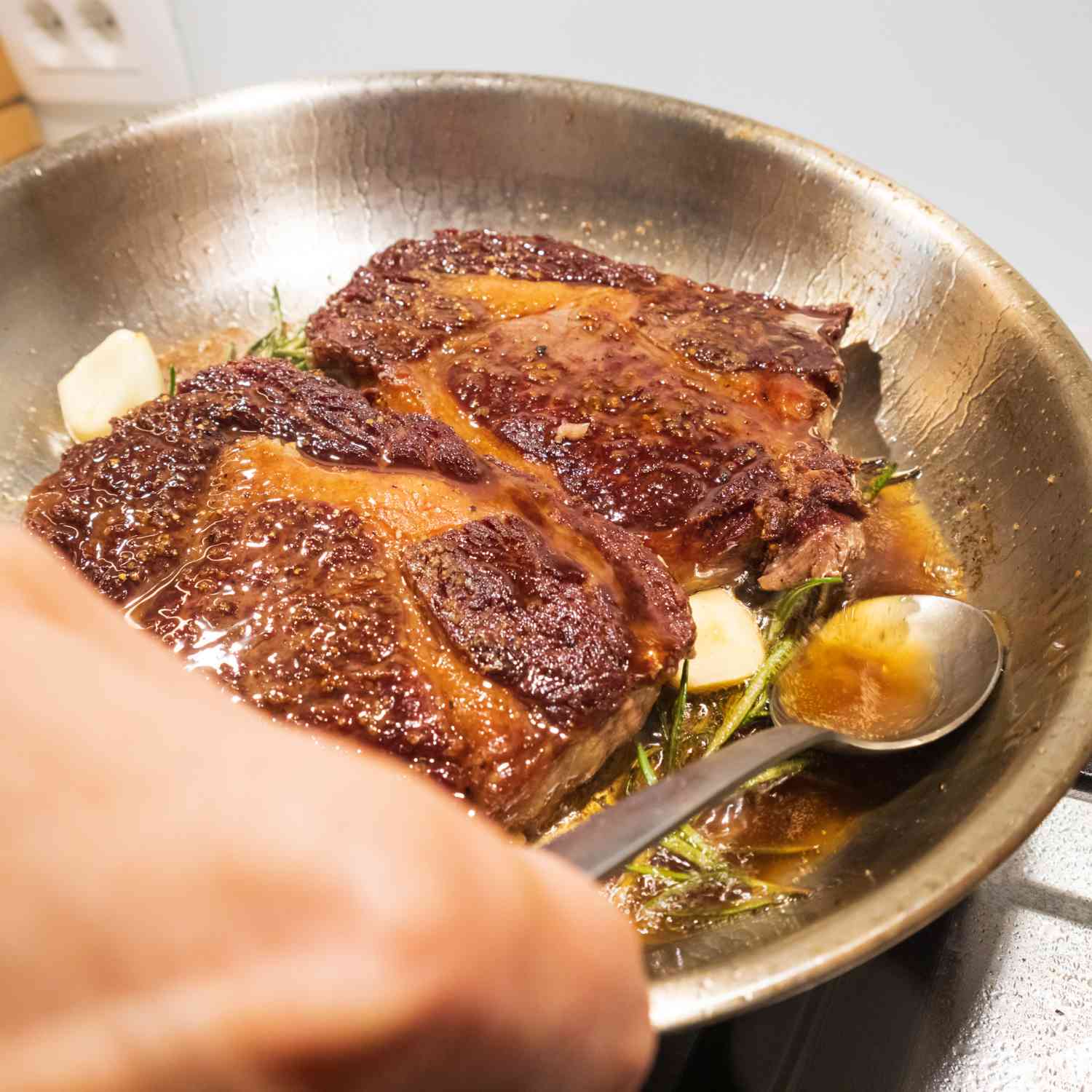
There are several excellent methods for cooking flawless ribeye steaks. Here are guides to the most popular techniques:
Grilling For maximum steakhouse flavor, grilling over hot open flames is hard to beat. Preheat your grill as hot as possible, 500°F+ if you can. Clean and oil the grates. Place steaks directly over high heat and resist the urge to move them for at least 3 minutes, allowing time to develop a flavorful crust. Flip and repeat on the other side. Grill until steaks are 5° below your target doneness to account for carryover cooking during resting.
Pan Searing Get a thick, heavy skillet very hot on the stovetop before adding just a small amount of oil or butter. Place steaks in the pan and let sear undisturbed on one side for 2-3 minutes to build a crust. Keep heat on high and flip to repeat on the second side. Baste steaks with butter or oil near the end for added flavor. Cook to 5° under desired doneness.
Broiling Preheat your oven broiler to high. Place ribeyes on a broiler pan and position under the heating element. Broil for 5-6 minutes per side, keeping a close eye to prevent overcooking. Leave the oven door slightly ajar to control the temperature. Turn as needed to evenly brown.
Roasting For gentler heat, try roasting in a hot oven. Heat to 450°F+ and place steaks on a wire rack set inside a sheet pan to promote air circulation. Roast for 8-10 minutes per side based on thickness, flipping halfway through. Monitor closely to avoid overcooking.
For medium-rare doneness, pull ribeyes between 130-135°F and rest before slicing. Adjust times as needed for varying thicknesses and tastes. An instant-read thermometer is critical for accuracy.
Resting, Slicing, and Serving Ribeye
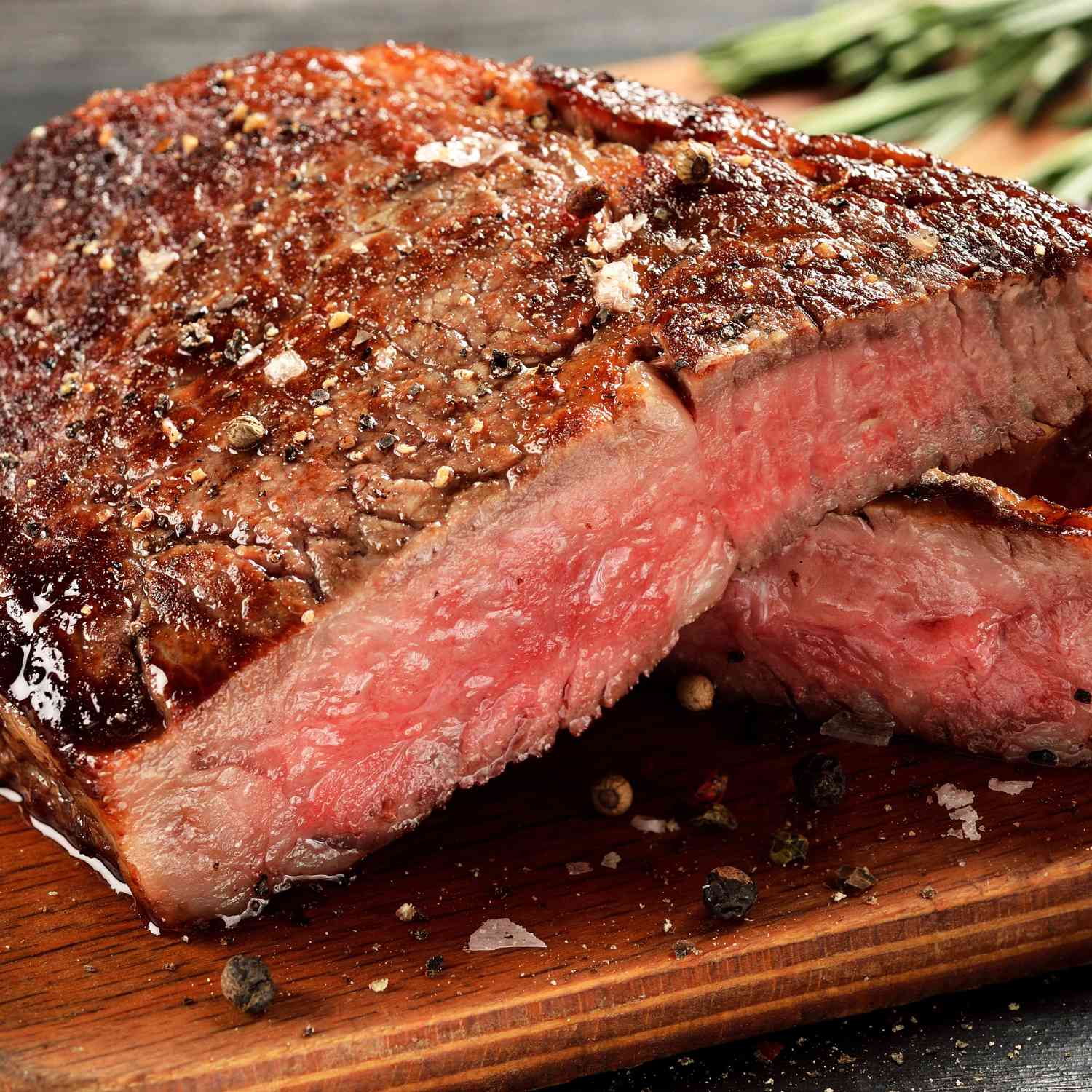
After cooking ribeye steaks, resisting cutting into them right away takes patience but pays off. Letting them rest allows juices to redistribute through the meat for a tender texture. Rest for at least 5 minutes, but ideally 10-15 minutes for 1-inch+ steaks.
When ready to serve, use a sharp knife to slice ribeyes across the grain on a slight diagonal into 1/4-inch slices. This produces shorter muscle fibers for even more tenderness with each bite.
Serve ribeyes with desired sauces like chimichurri or compound butter melting on top to enrich the flavor. Steakhouse sides like roasted potatoes, creamed spinach, or grilled asparagus complement perfectly. Garnish with fresh herbs like rosemary or thyme.
Doneness Guide for Ribeye
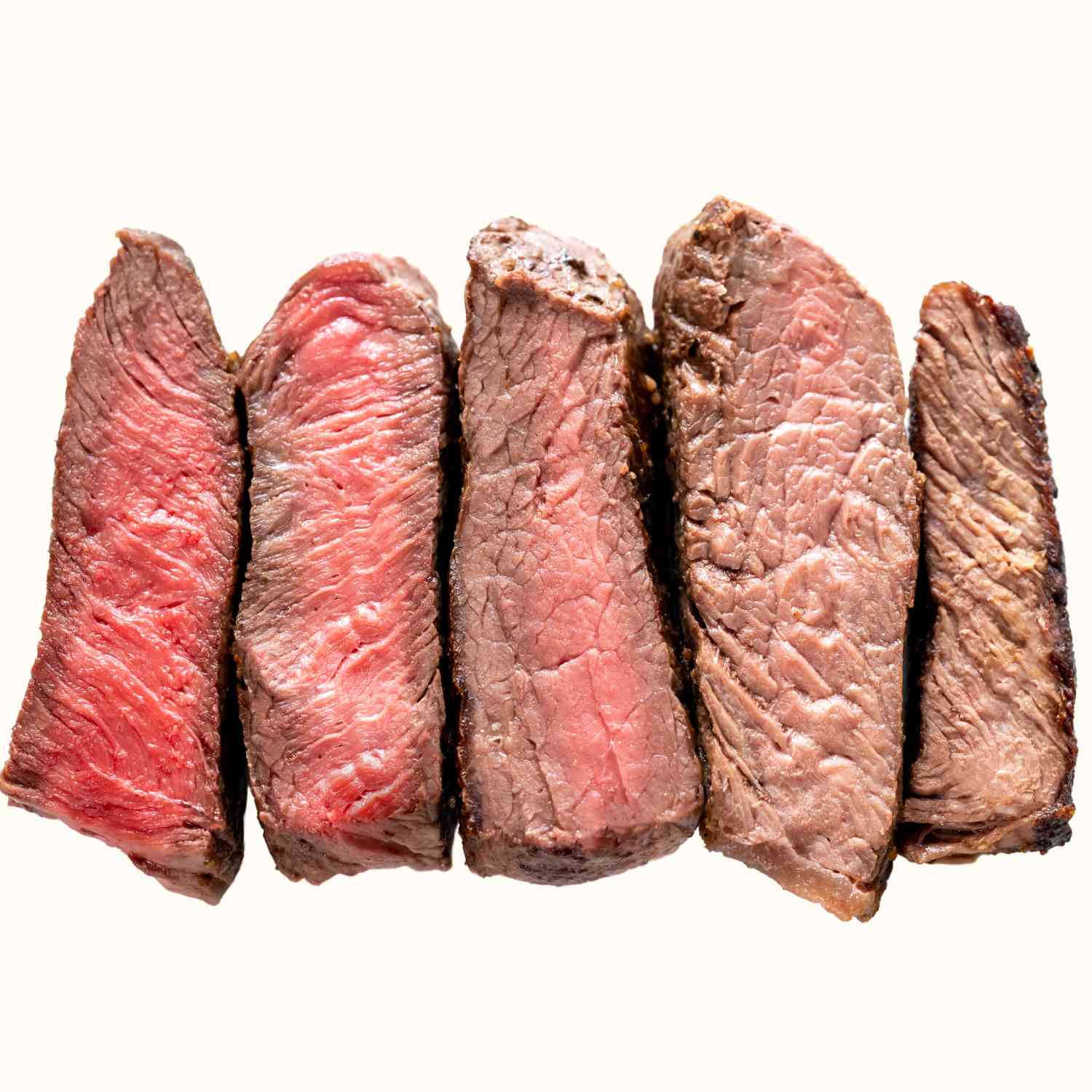
Using an instant-read digital thermometer is highly recommended for cooking ribeyes to your preferred doneness accurately every time:
Rare - 120-125°F (bright red cool center) Medium Rare - 130-135°F (warm pink center) Medium - 140-145°F (trace of faint pink center)
Medium Well - 150-155°F (thin pink line) Well Done - 160°F+ (uniformly brown throughout)
For the best balance of tender and juicy, medium rare is ideal for ribeyes. Remove steaks from heat before they reach target temps.
Marinades and Rubs for Ribeye
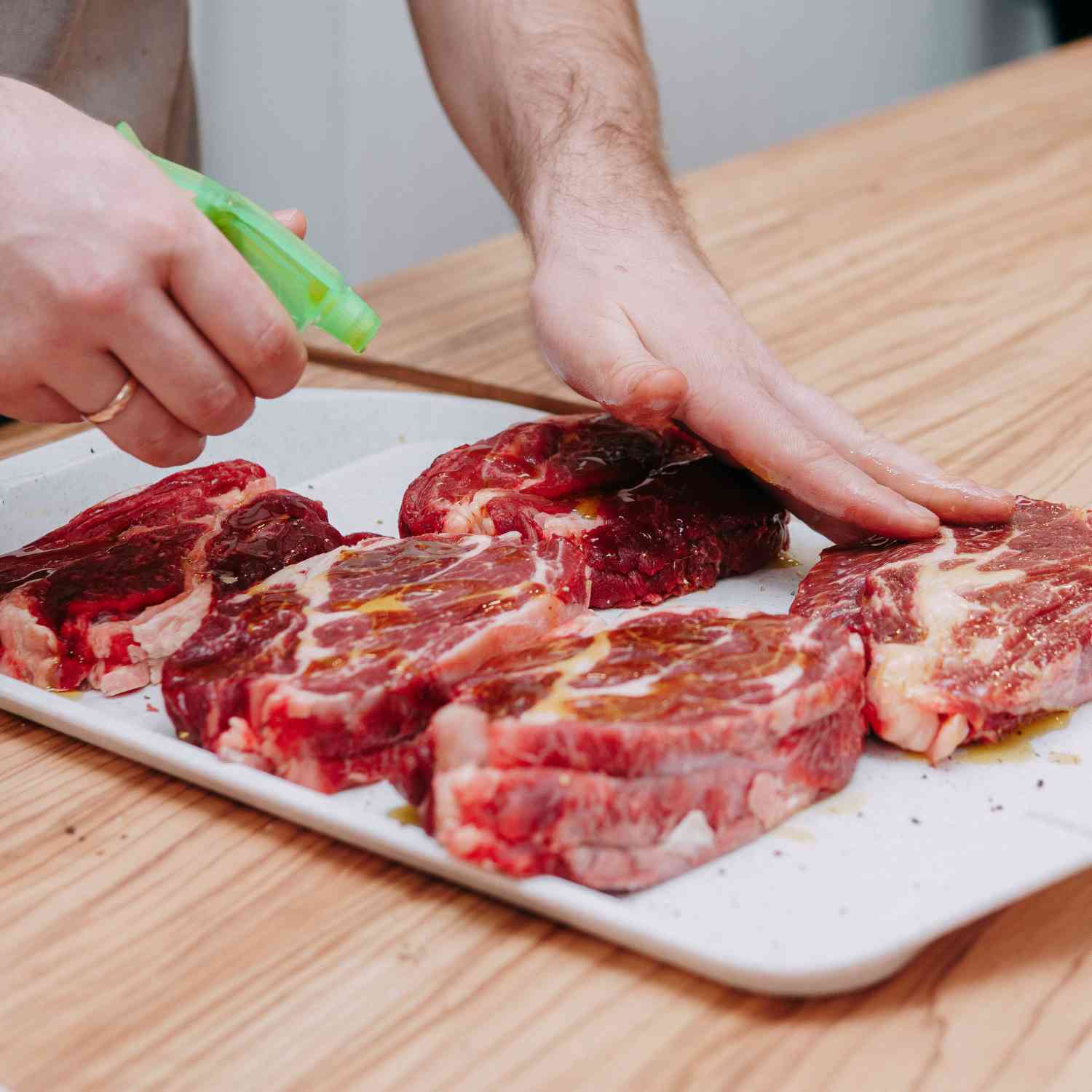
One way to add even more flavor is by marinating ribeyes or applying dry rubs. Keep marinades on the simpler side to avoid masking the wonderful beefiness. And go easy on sugary rubs that may burn.
Simple Marinades:
- Olive oil, garlic, rosemary, thyme, lemon - Let ribeyes soak 1-2 hours maximum.
- Soy sauce, honey, garlic, ginger - For Asian flavor, marinate for 30 minutes to 1 hour.
- Red wine, garlic, thyme, pepper - Bathe steaks 2-4 hours to tenderize.
Dry Rubs:
- Sea salt and cracked black pepper - This lets the steak flavor shine.
- Smoked paprika, garlic powder, onion powder - Apply just before grilling.
- Coffee grounds, brown sugar, chili flakes - Gently massage into a unique rub.
Keep seasoning complementary to let the incredibly beefy ribeye flavor take center stage. A simple salt and pepper dry rub never fails.
Frequently Asked Questions about Cooking Ribeye
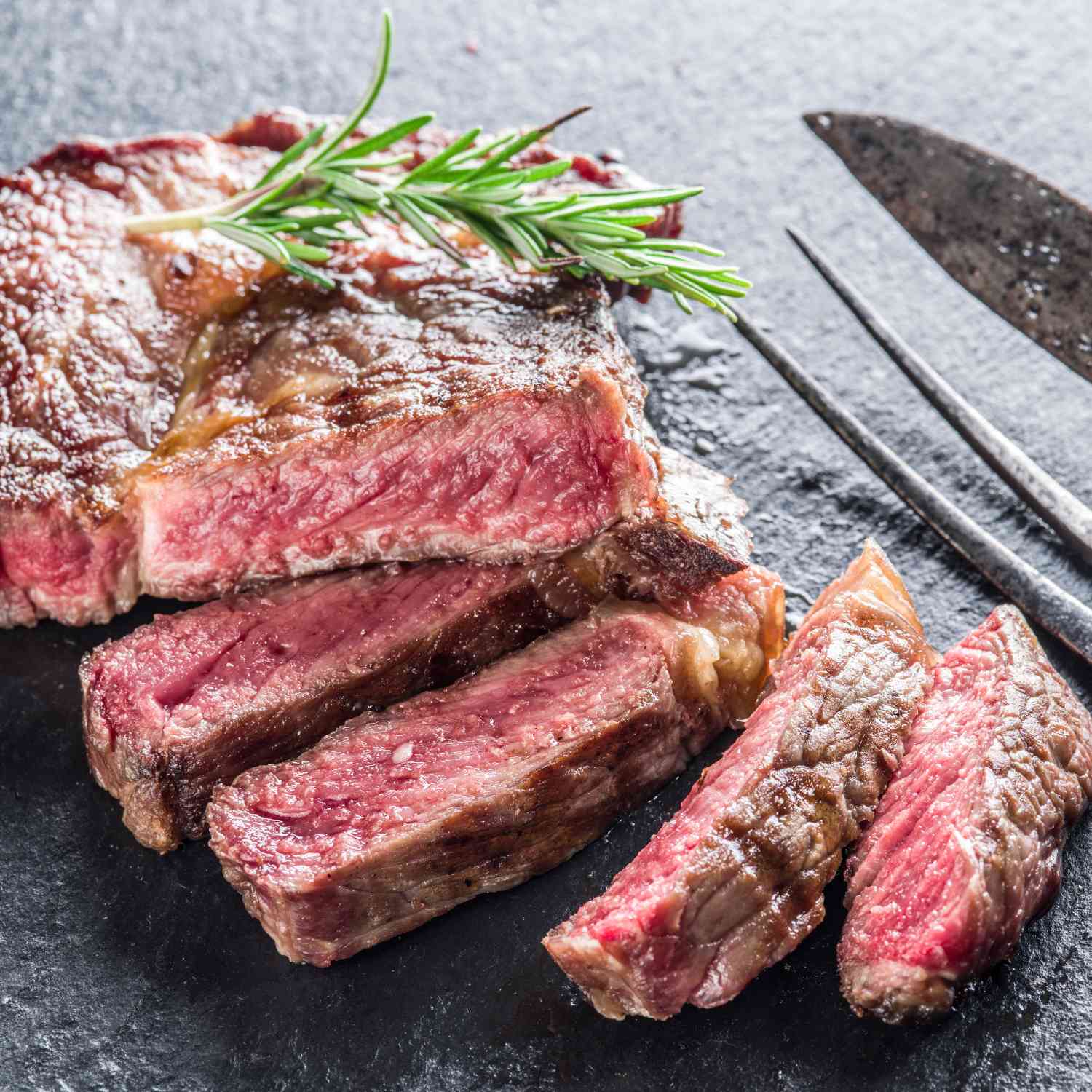
If you're new to cooking ribeye at home, you probably have some questions. Here are some common queries about ribeyes with quick answers:
Should I cook ribeye steak from frozen?
No, always thaw ribeyes overnight in the fridge before cooking. Starting from frozen risks underdone centers and overcooked exteriors.
Does ribeye need to be mechanically tenderized?
No, ribeye does not need to be pounded or needled. Its tender nature can become mushy if over-tenderized.
What oil is best for cooking ribeye?
Avocado oil has a very high smoke point that makes it ideal for high-heat cooking like steaks. Olive and grapeseed oils also work well.
How long should I rest ribeye after cooking?
Let ribeyes rest at least 5 minutes post-cooking, but ideally 10-15 minutes for the juiciest results. This allows juices to be redistributed.
Can you cook ribeye steak in the oven?
Yes, absolutely! Ribeyes can be cooked wonderfully in a very hot oven using the roasting method. Use a meat thermometer to test doneness.
Does ribeye have a lot of fat?
Yes, ribeye contains more internal marbling than many other cuts. But that fat provides signature flavor when rendered properly via high-heat cooking methods.
Ribeye Steak Buying Tips from Meat King

When purchasing ribeye steaks, here are some additional buying tips:
- Look for premium beef for the most marbling, flavor, and tenderness. Lower grades can be quite tough.
- For superior flavor and nutrition, choose grass-fed ribeyes when possible. The pasture diet impacts taste and fat profile.
- Buy ribeyes from a local butcher shop you trust for knowledgeable cutting and freshness. The meat counter may lack specialized knowledge.
- Splurge on premium ribeyes like Meat King (www.meatking.hk) for special occasions or gifts.
- Check labels and feel free to ask the source. Know where your ribeyes come from.
- Purchase ribeyes individually vacuum-sealed for maximum freshness. Avoid pre-packaged sets.
- At the store, choose packages with the latest sell-by dates for the longest shelf life.
- Examine ribeyes closely before purchasing. Reject dull, dry-looking, or odorous steaks.
Your Ribeye Steak Recipe Arsenal
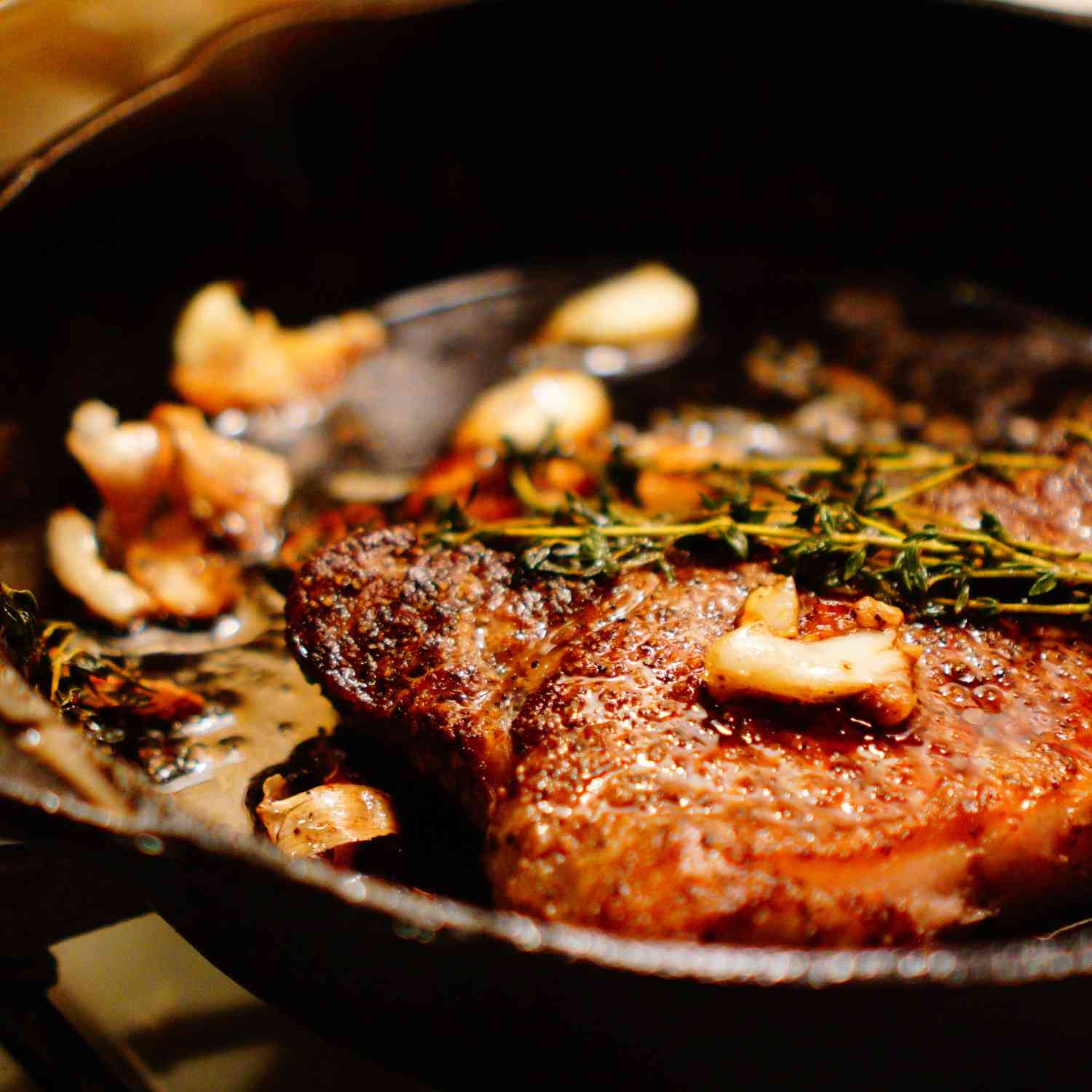
Ribeye steaks are extremely versatile and pair well with all different seasonings and sauces. Here are some mouthwatering recipe ideas:
- Garlic Herb Ribeye - Coat steaks with a paste of garlic, rosemary, thyme, and olive oil before grilling.
- Coffee-Crusted Ribeye - Coat steaks with a rub of coffee grounds, brown sugar, salt, and pepper before pan searing.
- Chili Lime Ribeye - Marinate ribeyes in soy sauce, lime juice, garlic, chili flakes, cilantro, and sesame oil.
- Bacon-Wrapped Ribeye - Wrap steaks in bacon to keep them tender and juicy on the grill.
- Blue Cheese Ribeye - Top grilled ribeyes with a dollop of blue cheese butter.
- Steak Diane Ribeye - Pan-sear ribeyes, then make a sauce of brandy, mustard, garlic, Worcestershire, and cream.
- Ribeye Steak Sandwiches - Slice grilled ribeyes thinly and pile high on bread or rolls with caramelized onions and chimichurri sauce.
The possibilities are endless for crafting incredible meals using high-quality ribeye steaks!
Conclusion
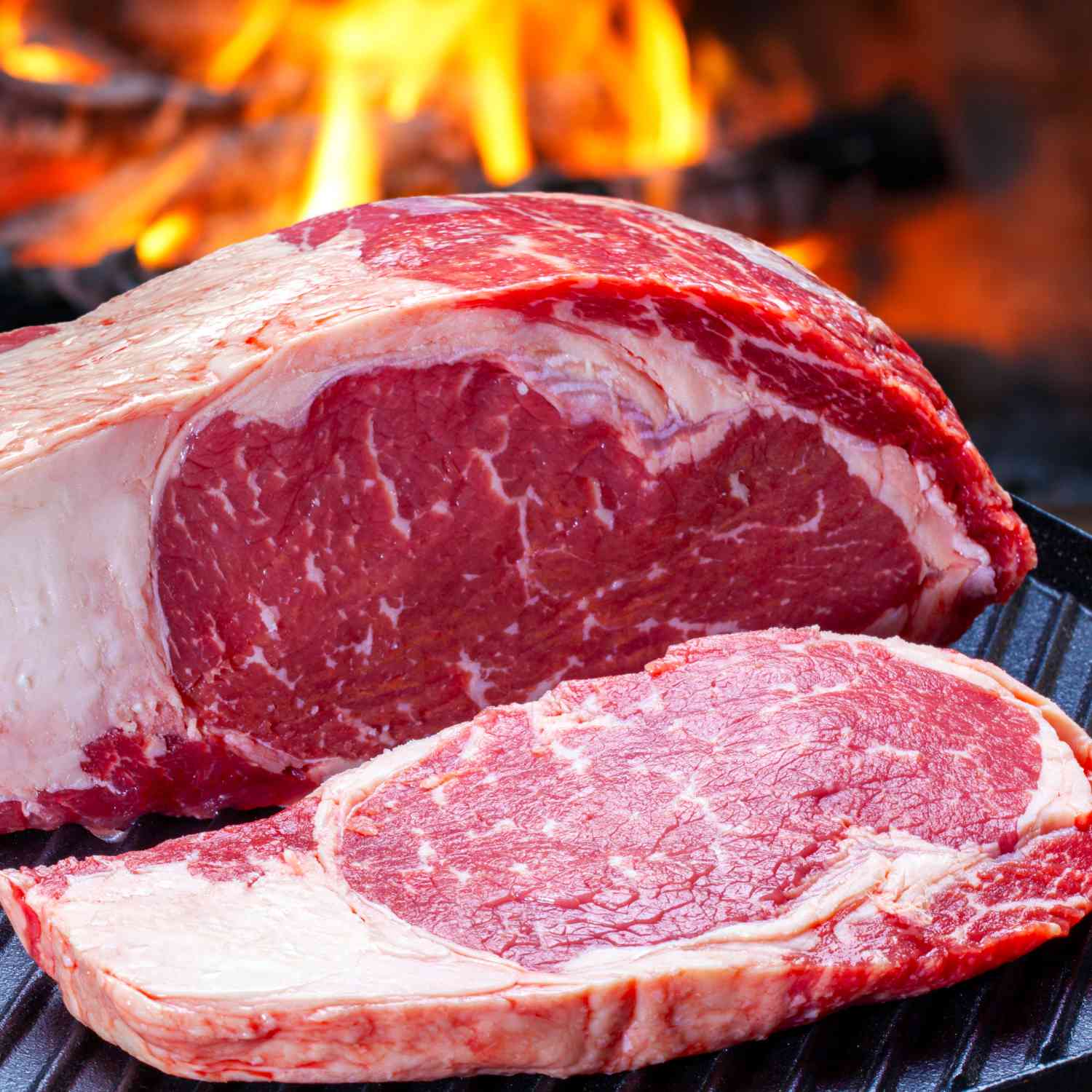
Ribeye steak is widely considered a top-tier cut of beef, earning it the well-deserved title "king of steaks." That's why we at Meat King put together a comprehensive guide to not just selecting and preparing ribeyes, but also cooking and carving them like a pro. Our guide covers everything from choosing the best quality raw steaks to nailing textures and doneness using various cooking techniques, ensuring that you get the most succulent, flavorful ribeyes every time. In fact, our guide is so detailed that you can even impress your guests with your knowledge of the anatomy of the ribeye and the science behind cooking it to perfection. Whether you're planning a special occasion or just a casual backyard barbecue, you can always trust Meat King to provide you with thick, beautifully marbled ribeye steaks that are sure to satisfy your craving for a beefy indulgence. So fire up the grill, follow our guide, and get ready to enjoy the ultimate steakhouse-quality ribeyes in the comfort of your own home. From all of us at Meat King, we wish you happy grilling and dining, and we look forward to providing you with more meaty inspiration in the future!

